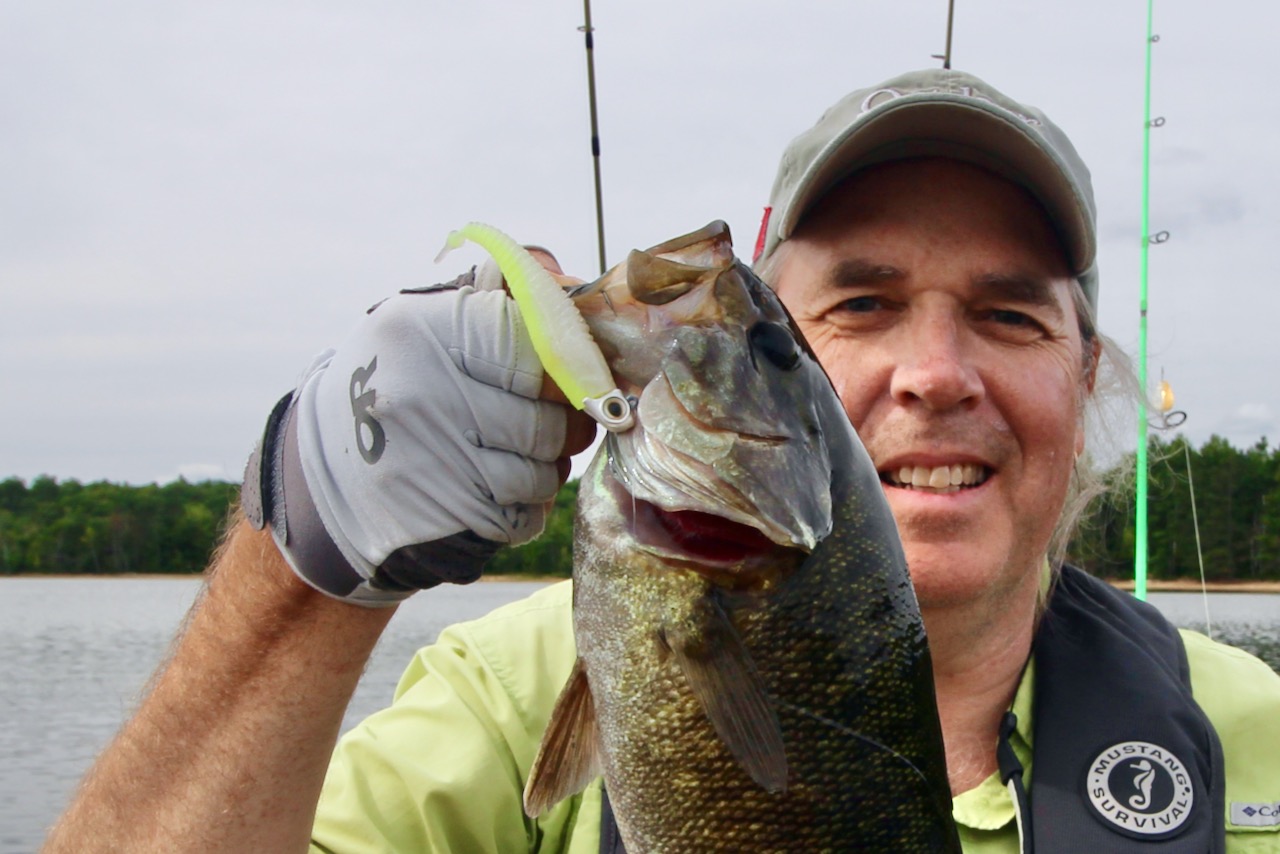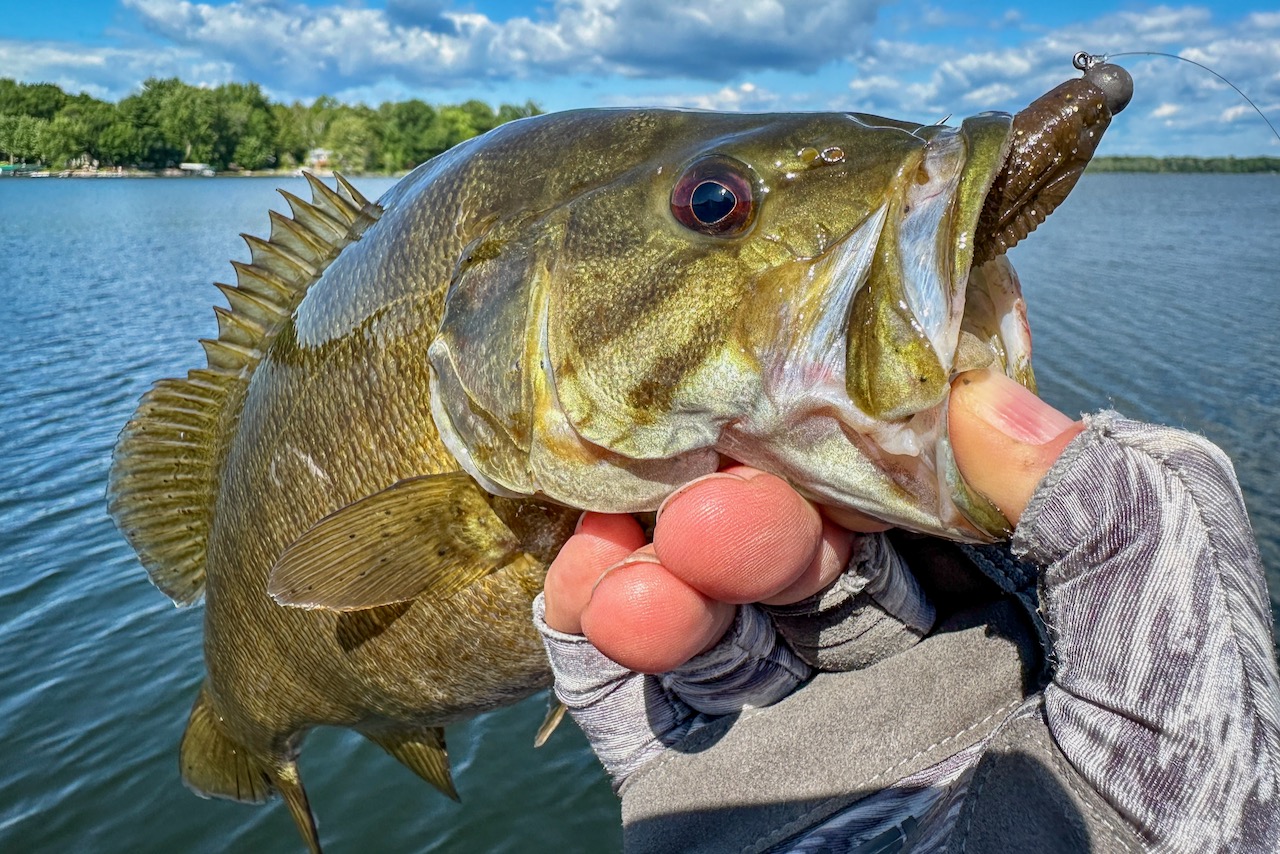SHAKE IT UP
How a simple tactic has revolutionized the way we catch bass
Advertisement

THE GEAR
Shaking a minnow is a spinning technique. The ideal rod length is 6′ 9″ to 7′ 2″, depending on your height and personal preference. Medium-light power with a fast action gives you enough tip action to shake effectively, along with the backbone to set the hook into big fish.
Spool up with high-visibility braid (eight- to 10-pound-test) on a 2000 or 3000 size reel. The bright line will assist in accurate casts, while a reel with a larger arbor will provide better line management and quicker pick-up. Also include a fluorocarbon leader. While 18 to 24 inches is common, a longer leader helps in clear water and eases the action of the jig. Be sure to keep the leader long enough that the knot doesn’t hit the rod guides as you fight fish close to the boat. The leader should already be wound onto your reel by that point anyway to avoid possible breakage.
Advertisement
THE SITUATION
Minnow shaking is not for heavy cover, as weeds or debris will kill the bait’s back-and-forth action. But in open water near structure—such as rock piles, weed edges and shallow flats—the technique excels throughout the open-water season. Bank anglers can work those areas without electronics and still have success, while boat anglers with basic sonar can focus on traditional fishy zones and get results. If you have forward-facing sonar, on the other hand, you gain the ability to pick off individual fish in real time. Whatever your approach, the shock comes when you realize just how many bass are cruising the open water, waiting for an easy meal. So, get out there, and get shaking.
BONUS TIPS
Once you’ve mastered the basics of shaking a minnow, here are six ways to refine the technique even further.
Advertisement
- Clear, cold or pressured waters can turn bass off. If you’re not getting bit, you may be shaking your bait too aggressively. Instead, try working it back without shaking it at all.
- The weight of your jig can make all the difference in getting bites. Fish feed up, so too much weight can keep your bait too deep. Go too light, however, and you may be too far above the fish. Be sure to experiment regularly.
- Triggering bites can be tricky. Select your baits based on their ability to attract fish and trigger bites. Bright colours may attract fish but not trigger them, for example, while realistic baits may go unseen. If you find the perfect balance of speed, size and colour, you’ll catch more bass.
- Hooksets are free, so use them. There are times when the fish will hit aggressively, and others when they’ll simply pick up your bait while swimming towards you. If you feel the weight of your bait disappear, set the hook.
- If you are using forward-facing sonar, do not cast your bait directly on top of the fish. Instead, cast past them and allow your bait to pendulum back in, just above them. To get the fish to commit, keep pulling your bait up and away from them.
- Although shaking a minnow is typically a finesse technique, don’t be afraid to experiment. For example, grab a baitcasting outfit spooled with 12- to 17-pound line and throw minnows in the five- to seven-inch range on jigs with bigger hooks. You may be amazed at how aggressively the fish will eat those, too.

